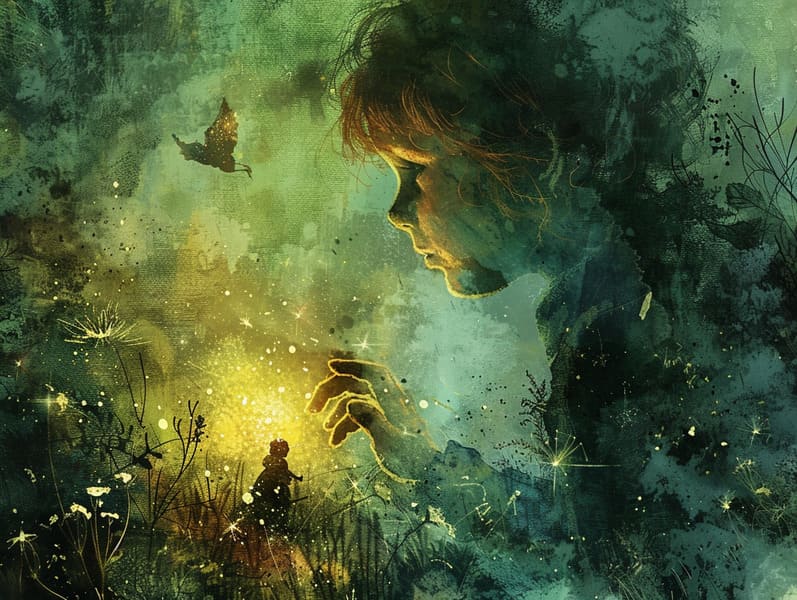The Start of Grimm's Fairy Tales with Their Unending Attraction.
The Start of Grimm's Fairy Tales with Their Unending Attraction.
Blog Article

Classic fairy tales have legendary status. These narratives have been relayed from one generation to the next long before they were ever transcribed. They originated from a variety of cultures, including African traditions. They were initially shared among adults, often carrying themes and messages reflective of the societal norms and beliefs of the time.
The Grimm brothers, Jacob and Wilhelm (the Grimm brothers), were among the first to compile and publish many of these beloved stories. Their collection, "Grimm's Children's Stories," included tales like "Cinder Maid," "Hansel and Grethel," and "The True Story of Snow White," which have since become essentials in the world of beloved fairy tales. Similarly, the Danish author's magical stories, such as "The Mermaid's Tale," and "The Little Duckling," have touched hearts worldwide, securing their place in the pantheon of beloved fairy tales.
Despite being ancient, fairy tales remain as meaningful as ever, especially as children's night stories. These charming stories are now available in various formats, including colorful picture books, captivating animations, and online fairy tales.
Their lasting presence can be traced to several magical reasons:
Important Morals: Timeless fairy tales often share important moral lessons. Tales like "The Wolf and the Liar" teach the virtue of honesty, while "The Tale of the Tortoise and the Hare" exemplify the qualities of tenacity and modesty. These narratives offer children clear distinctions between right and wrong, molding their moral compass in a soft yet meaningful way.
Kindness and Comprehension: Ancient fairy tales frequently involve individuals facing difficulties and adversities, stimulating children to relate with their struggles and rally behind their triumphs. For instance, "The Tale of Beauty and the Beast" demonstrates the merit of looking past the exterior to see the inner being of a individual, encouraging warmth and knowledge.
Cultural Appreciation: Many old fairy tales are rooted in the cultural contexts from which they blossomed. Discovering these narratives can provide fascinating glimpses into different social structures, nurturing a sense of world awareness and awareness.
Creativity and Imagination: The whimsical elements in old fairy tales—spells and potions—encourage children’s creative thoughts. These fairy tales take readers to imaginary realms, enhancing fantasy ideas and a sense of mystery that remains a lifetime.
Classic fairy tales are not only captivating but also pedagogical. They function as whimsical tools in developing various cognitive and affective skills in young ones. When timeless fairy tales are spoken out loud, they advance speaking abilities by bringing new phrases and elaborate sentence structures. This practice also advances hearing abilities and attention, as kids focus on every detail, eager to see what happens next.
Furthermore, reflecting on the themes and characters of fairy tales can develop cognitive skills and logical thinking. The young are educated to recognize patterns, make predictions, and comprehend cause and effect. These conversations also promote young readers articulate their thoughts and feelings, cultivating their emotional intelligence.
In today’s technological age, the existence of web-based fairy tales has made these stories more available than ever. Web platforms and digital apps present huge assortments of ancient fairy tales that can be looked at or played anytime, anywhere. Fairy tales told out loud are particularly popular, giving an engaging way for the young to immerse in these captivating stories. Spoken stories and read-out-loud stories lead characters and settings to life, often supported by enchanting music and melodies that amplify the narrative journey.
The timeless appeal of ancient fairy tales lies in their ability to shift to modern society while keeping their fundamental ideas. Contemporary versions of these stories often highlight more varied protagonists and modern settings, making them relatable to today’s audience. However, the key lessons of gallantry, empathy, and justness remain unchanged, continuing to strike a chord with listeners of all ages.
Traditional fairy tales also offer a sense of coziness and comprehensibility. They share a structured narrative with a apparent beginning, middle, and end, often coming to a close with the culmination of conflicts and the triumph of justice over injustice. This uniformity can be heartening for the young, granting a sense of sturdiness in an unstable world.
Ancient fairy tales continue to captivate and educate new generations, maintaining their allure and importance in modern society. As bedtime stories for kids, they disclose a perfect blend of wonder and wisdom, promoting moral values, empathy, and creativity. The accessibility of web-based fairy tales and the commonness of fairy tales voiced affirm that these classic tales remain accessible to new generations.
By sustaining and making known these stories, we continue to praise the rich tapestry of folklore and cultural heritage. Whether you are exploring a artistically illustrated book, accessing a cyber collection, or listening through an read-aloud story, the radiance of bedtime fairy tales is always within reach. These stories show us of the enduring influence of stories and its ability to bring website us together across time and space.
Regardless if you are viewing a richly illustrated book, seeing a online library, or listening to an audio story, the radiance of classic fairy tales is always within reach.
These stories point out of the everlasting force of tales and its ability to tie us across epochs and places, creating a bond that fascinates and enlightens alike.